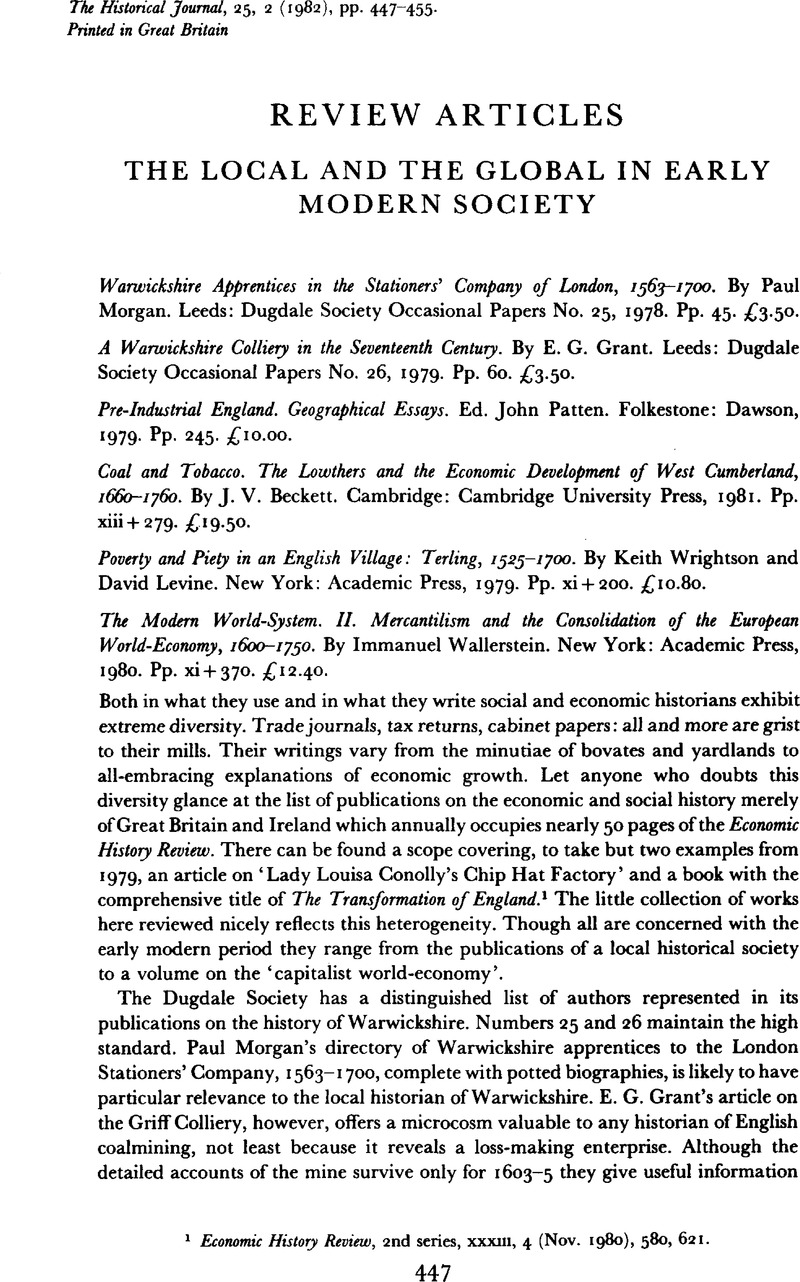No CrossRef data available.
Article contents
The Local and the Global in Early Modern Society
Published online by Cambridge University Press: 11 February 2009
Abstract

- Type
- Review Articles
- Information
- Copyright
- Copyright © Cambridge University Press 1982
References
1 Economic History Review, 2nd series, xxxiii, 4 (Nov. 1980), 580, 621.
2 A new historical geography of England, ed. Darby, H. C. (Cambridge, 1973)Google Scholar; An historical be geography of England and Wales, ed. Dodgshon, R. A. and Butlin, R. A. (London, 1978).Google Scholar
3 P. 106. The officers were churchwardens, session jurymen, constables, sides men, over seers of the poor, vestry men and manorial jurors.
4 Table 4.7, p. 105. For over seers (1660–99) 80.8 per cent were in categories 1 and n compared with 73–1 per cent in 11 and in; for vestrymen (1670–99) 64–1 per cent as compared with 87–2 per cent.
5 Annual abstract of statistics (1971), p. 36.
6 Leviathan, ed. Oakeshott, p. 82.
7 Terling, for examples, pp. 49, 75, 99.
8 Spufford, M., Contrasting communities: English villagers in the sixteenth and seventeenth centuries (Cambridge, 1974)CrossRefGoogle Scholar; Hey, D. G., An English rural community: Myddle under the Tudors and Stuarts (Leicester, 1974).Google Scholar
9 World-system, 11, 7–8.
10 See the review article by Dr Outhwaite in Historical Journal, xx, 2 (June 1977), 497–502.Google Scholar
11 The capitalist world-economy: essays(New York, 1979).Google Scholar


